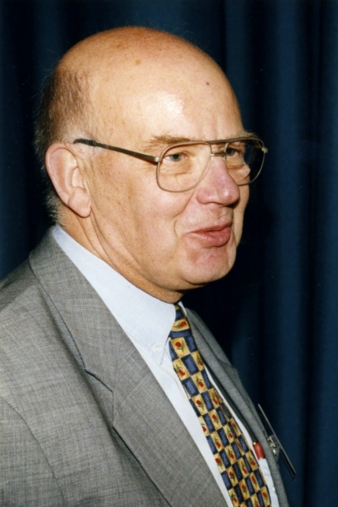05/05/2020 – Obituary Philipp Moll — auf Deutsch lesen
A life for the technology of sewing
“Further automation of sewing processes is the only chance of survival for the German and the Western European apparel industry.”
This said Philipp Moll 1995 in an interview article with German daily newspaper Frankfurter Allgemeine Zeitung. Spoke it and set out to prove – the joining of two-dimensional cut parts into three-dimensional shells is also possible for flexible materials in an automated and process-integrated fashion. What is just now, in the second decade of the 21st century, on the verge of a breakthrough for industry-wide application, he had already invented robotic sewing in the mid-1990s and brought his Robosew prototype to market maturity, for very first use – in automotive interior for headrest production.
He had a dream...
His dream of preventing the final migration for most of the garment production to the Far East could not be realized, however. Here he shares the fate of true visionaries, with his idea and pioneering work simply being too early. In the case of garment production for the idea of producing close to the P.O.S. too late – at that time. This despite the fact that his application for the “Production 2000” future program had been approved for funding by the German federal government and with development partners from all the disciplines on board. After all, the mainstream was already too far advanced for migration to countries with unrivalled low labor costs. Moreover, the sewing machine industry worldwide was already in deep crisis and far from investing in the broad marketing of revolutionary solutions.
Philipp Moll’s place as a technological revolutionary in the history books has nevertheless been secured by his trend-setting approach to sewing in the spherical along a shaped body: His other most spectacular development – the “surgical sewing machine” – created the conditions to save lives – in medical technology: Moll’s prototype optimizes the post-operative suturing process (40 knots per minute versus two for manual suturing by the surgeon) on humans.
Option to significantly shorten operation/anesthesia times and also for endoscopic sewing, thus improving the chances of recovery and reducing surgical risks. Over more than 50 years of dedicated service, his work as inventor and entrepreneur had been focused on maintaining the competitiveness of the garment industry. A large number of units from his construction & development offices have long since found their way into the garment manufacturing industry as standard worldwide. These include the automatic roller picker, the rotary table for pre-sewing and trimming small parts, feed devices (indexer) and peripherals for handling complex /- 2 sewing processes such as buttonhole processing. The industry owes the proprietor of more than 100 patents a multitude of innovative operating equipment for significant process improvements – and thus quality assurance and cost reduction.
Closely linked to the textile location Aachen
Closely linked to the textile location Aachen, his successful work over decades is characterized by the fruitful cooperation with the TH/RWTH, the Institute for Textile Technology (ITA), the Aachen University Hospital. As co-founder and chairman for decades of the Institute for Sewing Technology (IfN), he also ensured the further development of innovations in research. Those were the times when the Western European apparel industry as a major economical factor still could count on some governmental lobby. Already in his 80s, the father of five children published his book “A Life for the Sewing Machine” in 2015.
“Philosophy – I would have answered without hesitation if someone had asked me after the war what I wanted to study.”
This was once his answer to the chronicler in an interview for the trade press. And yet, it was “wanting to know why” that shaped his life. We would have liked to have continued discussions with him – now about opportunities, but also challenges for the global world with the broad application of automated 3D sewing which is now within reach.
On April 10 Philipp Moll, visionary and designer of trend-setting sewing technology, died on the age of 90 in his city of birth and the center of his place of activity, the former stronghold of the textile industry in Germany – at Aachen. We will never forget him.
Yvonne Heinen-Foudeh, Prof.Dr. Kerstin Zöll

